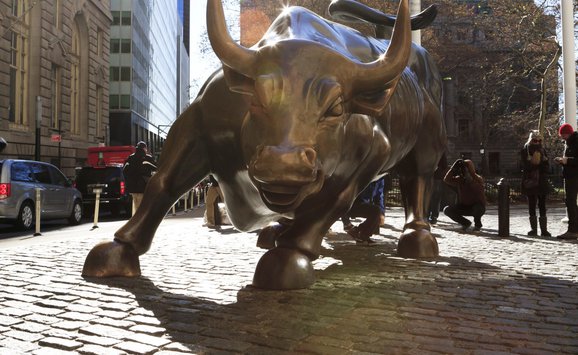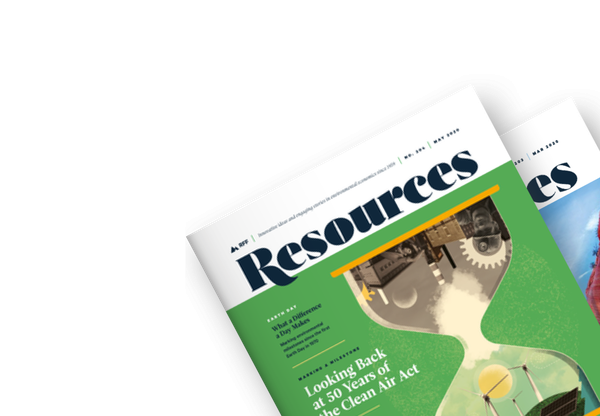In this week’s episode, host Daniel Raimi talks with Heather Zichal, global head of sustainability at JPMorganChase, about the role of financial institutions in the energy transition. Zichal explains how she has advanced climate policy goals from positions in the United States Congress, the executive branch, nonprofits, and the financial sector. From these diverse perspectives, Zichal outlines the opportunities and challenges for climate-policy stakeholders as they navigate an uncertain political environment. Zichal highlights how financial institutions support the energy transition through green finance commitments, supporting clients’ sustainability goals, and investing in emerging technologies to support the world’s energy needs. Zichal underscores the importance of promoting climate solutions that focus on long-term value in the context of commercial and sustainability goals and that balance environmental and business priorities.
Listen to the Podcast
Audio edited by Rosario Añon Suarez
Notable Quotes
- Financial institutions have a vested commercial interest in preventing the worst outcomes of climate change: “It’s about leveraging business opportunities and managing downside risk. As the world’s largest bank, we’ve got a commercial interest in avoiding the worst outcomes of climate change. So, we work with our clients on this issue every day in every part of our firm.” (8:00)
- Politicization of climate policy obscures the benefits of mitigating climate change: “What concerns me is the tendency to politicize climate issues. It’s important, from my perspective, to focus on the commercial value and the benefits, instead … Our bank is better off in a world with reduced warming and more energy in a growing economy. That’s not politics; it’s economics.” (20:10)
- In an unpredictable political environment, policies that balance climate and business priorities may find increased success: “I actually think, in a mildly ironic way, this current political environment is making us have laser focus on what works for our business as well as what doesn’t … I actually think it’s going to lead to more durable progress over time. We win the day, absolutely, when the sustainability value proposition makes sense for both a company’s financial budget and the world’s carbon budget.” (20:45)
Top of the Stack
- Ocean with David Attenborough
The Full Transcript
Daniel Raimi: Hello, and welcome to Resources Radio, a weekly podcast from Resources for the Future (RFF). I’m your host, Daniel Raimi. Today we talk with Heather Zichal, global head of sustainability at JPMorganChase.
Heather brings a fascinating set of perspectives based on the wide range of roles she’s held in the United States government, with nonprofits, and now in the financial sector. In today’s conversation, I’ll ask her about a similarly wide range of topics, including the role that financial institutions play in shaping the future of the energy system, how she helped craft climate policy during the Obama administration, and how the recent federal reconciliation bill will affect the clean energy industry. Stay with us.
Heather Zichal from JPMorganChase, welcome to Resources Radio.
Heather Zichal: Thank you. Great to be here.
Daniel Raimi: It’s a pleasure to have you, and an honor to have you, given your long and distinguished career in energy and climate policy. We’re going to talk about your path, and we’re going to talk about some of your work in the past. And we’re going to talk about your perspectives on where we are today.
I’d love to start by asking you the same question we ask all of our guests, which is how you got interested in these issues, whether it began as a kid or whether you came to work on energy and environmental topics later in your life.
Heather Zichal: I think I was born with environmentalism and conservationism in my DNA. I grew up as a little kid loving to be outside, happier to be outside with my grandfather milking cows on his dairy farm and spending time canoeing and fishing with my father. Ultimately, I was lucky enough to find a way to make the number one motivator for me into a career-long endeavor.
I’ve been able to work on this issue from so many different seats. I feel incredibly lucky to have had the opportunities to make progress, whether that was in the nonprofit field—and I know we’ll talk about this—or government, or now at JPMorganChase. So, as I said, I feel like it was in my DNA from day one, and I feel very lucky to be able to dedicate my career to the issue.
Daniel Raimi: That’s great. Where did you grow up, by the way?
Heather Zichal: I grew up in a tiny farming community in northeast Iowa, not exactly thinking I would ever find myself on the East Coast, and certainly not working in the US government, or with JPMorganChase. But, I was driven to figure out where I could go and work on these issues and have the most impact.
Daniel Raimi: That’s really interesting. Well, as you mentioned, you’ve held all sorts of roles in the public sector, on the NGO side of things, in the private sector, of course, and now in the financial sector. So, I’m curious about the evolution of the jobs that you’ve taken and, particularly, why you became interested in working in the financial sector at this point in your career.
Heather Zichal: Absolutely. So, to rewind the clock quite a ways—because I have been in Washington for 25 years—initially, I was a climate advocate in college. I spent a lot of my spare holidays coming to Washington, DC, and lobbying on issues like protecting the Arctic National Wildlife Refuge, cleaning up Superfund sites in low-income communities. So, from a very early age, I understood the connection between policymakers and getting the right environmental outcomes. So, Washington, DC, was incredibly interesting to me.
I ended up working on a congressional campaign. That member defied all odds and actually ended up winning a congressional race in New Jersey. I came to Washington, DC, with him, expecting—like many people who come to Washington, DC—to spend a couple of years trying to advance the agenda, get smarter about how Washington works, and then, ultimately, my plan was to head back to the Midwest and to work at a nonprofit.
But, once you get in Washington and you help a member of Congress pass some amendments, you see that you can have a real impact on things, like the Superfund cleanup I mentioned, or funding for the Land and Water Conservation Fund. And that just became really exciting to me. How can I use these positions? How can I advance the agenda? How can I work with members of Congress to find bipartisan opportunities to make real progress?
That, over time, led me to the White House, which was an amazing opportunity. I feel very lucky from working for John Kerry and Barack Obama, having worked for two amazing climate activists. But, then I also realized, “Okay, my time in government is done. I want to understand these issues from the other side of the table. I want to understand how nonprofits think about these issues. I want to understand how the business community thinks about these issues.” So, I transitioned out of the Obama White House in 2014 and took on a series of different positions, both with nonprofits and as an advisor to major corporations. And that finally brought me full circle to the one area that I really had wanted to understand, which was the financial services sector.
So, obviously, as you think about the broader decarbonization agenda, as you think about the role that finance plays, this was one piece of the puzzle that I didn’t necessarily have insight into. So, when this position came along, I was incredibly excited to come to JPMorganChase and share the perspectives I had—whether that was in government and the role that policy can play or with nonprofits who are trying to move the agenda forward. All of those things I think really helped me bring a lot to this role.
And it’s also really interesting as I’ve watched—because I have been watching this broader journey that we’re all on—this decarbonization journey change so much. The role that banks and sustainability leaders play within the financial sector has also significantly changed.
If you dial back the clock even five or ten years, the role was very much like: How do we use global philanthropy to advance the climate agenda? Fast-forward to today, it is very much embedded in the business. How do we create new products and services for clients? How do we think about our own climate strategy as an independent firm? How are we responsive to a new and very evolving policy climate, whether that’s in the United States or Europe or Asia-Pacific?
It was a very exciting perch to, as I said, use all of the talents and perspectives that I’ve gleaned over the last 25 years to continue to work on an agenda that I really believe in and stretch and understand a new piece of the broader climate puzzle, which I think is going to be incredibly important as we continue on this journey.
Daniel Raimi: I would love for you to tell us actually a little bit more about that. You mentioned the ways that you and other banks work with clients to advance their sustainability goals. And, of course, JPMorganChase is a large firm, and you have your own sustainability goals. So, can you just talk a little bit about how financial institutions contribute to the energy transition through those different channels or maybe other channels that are important?
Heather Zichal: Exactly. So, inherently, it’s pretty simple. It’s about two things. It’s about leveraging business opportunities and managing downside risk. As the world’s largest bank, we’ve got a commercial interest in avoiding the worst outcomes of climate change. So, we work with our clients on this issue every day in every part of our firm, but they are, I think, most clearly demonstrated by our targets.
So, as a firm, JPMorganChase has committed $1 trillion in green financing by 2030. We have nine finance emissions targets for eight different sectors, ranging from shipping, to transportation, to oil and gas, and power. We’re also, as you noted, doing our own part by decarbonizing our operations. So, as we engage with our clients, we also want to walk the walk. So, we are prioritizing emissions reductions and procuring zero carbon energy for our own footprint, but we’re also purchasing high quality carbon removal credits. For example, we recently announced offtakes with both CO280 and 1PointFive, which we’re really excited about.
Daniel Raimi: That’s super interesting. I’m sure we could do entire episodes on both those little nuggets that you mentioned, the high-quality carbon removals and, of course, working with clients.
You dialed back the clock earlier, and I’m going to dial it back, as well, maybe even not quite as far as you began with your original career in Congress. But I’d love for us to talk a little about your role in the Obama administration and crafting climate strategy during President Obama’s term, including the Clean Power Plan, which was a really big component of the strategy as a regulatory approach to reducing greenhouse gas emissions from the electricity sector.
Can you just give us a thumbnail reminder—for those of us who are not living in 2012 anymore—about what the strategy was? What was the Clean Power Plan, and how was it designed to kind of all fit together?
Heather Zichal: Absolutely. I was lucky enough to work on the Obama campaign in 2008. So, I had kind of a front-row seat while I was working with him to figure out what’s the climate policy we want to develop on the campaign and what we wanted to run on, defend, and then, ultimately, implement. Having that front-row seat not only in the campaign but then on the transition and then for the first six years of the administration was an incredible opportunity.
As you might recall—for some of you that geek out on the history of US climate action—the first term was very much focused on how the Obama administration could work with Congress to place a price on carbon. And ultimately, there was support for a cap-and-trade bill. Candidly, if you go back to the 2008 race, one of the interesting things is both the Democratic presidential candidate and the Republican presidential candidate were running on a cap-and-trade program. So, the vision was: we will work with Congress, we will get a price on carbon through Congress, and ultimately, that will be the policy, and that is what the administration will focus on implementing.
To wind back the clock, the stars were not aligned in the Senate for that legislation to get across the finish line. So, it meant that the administration over time had to change the way we thought about our policies. Yes, we were going to leverage down and use the incredible funds available through the Recovery Act to advance clean energy research and development to deploy historic amounts of wind and solar and to start some of the first electrification. But, ultimately, by the second term, there was broad recognition that the path to deeper emissions reductions, in particular in the power sector, was going to have to rely solely on existing authority. So, across the administration, what tools do we have in the tool kit to decarbonize the economy in a way that keeps affordability and energy security front and center as we’re pursuing that agenda?
So, in June of 2013, President Obama announced what I affectionately remember as the Climate Action Plan, and it involved a number of different regulations with the ultimate goal of cutting domestic carbon emissions. And we, for the first time, also delved into: How do we build a more resilient economy, and ultimately, how do we work internationally to address climate change? So, all three of those components were part of this broader strategy.
I remember in June 2013, ironically, when the president was giving this speech, we had a historic heat wave. He gave this speech at Georgetown University in Washington, DC. Because of the historic heat, it was so hot that, in fact, the teleprompter went out, and the president had to give this very policy-rich speech under 95 degree heat with no teleprompter. And I knew what was happening. I’m like, “Oh my goodness. I hope all this lands in the right place.” Because, ultimately, we were talking about increasing energy efficiency, wind, solar. We were talking about modernizing infrastructure to better withstand extreme temperatures. So there’s like 82 moving parts of this. I think the centerpiece of that climate action plan is what is, again, affectionately remembered as the Clean Power Plan, which was aiming to reduce carbon dioxide emissions by 32 percent by 2030 in the power sector. And that was through a regulation that the Environmental Protection Agency (EPA) actually proposed and worked to finalize.
So, all of that to say, there were a lot of different moving pieces of that puzzle. But I also think that it’s also why it’s important to have somebody in the administration—in any administration—that can take a holistic view, because it’s not just about what EPA is going to do with fuel economy standards. It’s also about what’s happening at the Department of the Interior with their offshore oil and gas strategy. It’s about methane emissions, which is both the Department of the Interior and EPA. It’s about tailpipe emissions from cars and trucks, which is about the Department of Transportation and EPA.
So, there’s a lot of different agencies when it comes to using your executive authorities that have to be involved. And I was the one who was kind of the keeper of that broader strategy and trying to think through how we responsibly use these authorities and what it all looks like at the end so that—whether that’s engaging with the American population or engaging with international climate negotiators—we can be clear about the trajectory we’re trying to put America on and be very clear and transparent about that pathway.
Daniel Raimi: That’s fascinating. When you think about all the different levers that are available to pull that affect the economy and particularly the energy sector—energy efficiency, as you mentioned, there are just so many of them—it must have been a pretty substantial portfolio that you were juggling.
Heather Zichal: Yeah, I mean I don’t think I slept for a few years there, but what a fascinating opportunity to be front and center. And still, a lot of the things that we did in the Obama administration were done … We, for the first time in 30 years, put forward fuel economy standards that were embraced not only by all the states and the environmental organizations, but the auto industry itself.
So, it’s a good reminder that there are ways to make the stars align when you can engage in a robust dialogue about how you create policies and go through the very sometimes painful process of rulemaking. But, there’s a reason you go through and you have a proposed rulemaking and then you make tweaks and you finalize it. I think part of the magic of pulling that off also had a lot to do with the political environment, which I know we’re going to talk a little bit about, too.
Daniel Raimi: Yeah, for sure. I remember President Obama said sometime during that era that he has a phone, and he has a pen, which nicely encapsulates the engagement that’s necessary and the detailed rulemaking that’s necessary to make all that stuff happen.
I’d love to ask you now specifically about one really important component of the climate strategy, which was the Clean Power Plan. Can you say a little bit about how that policy was developed and how things like the timelines and the targets were developed, or any insider info that someone from the outside might not appreciate when you were working with colleagues in the White House and EPA to start coming up with the framework for something like the Clean Power Plan?
Heather Zichal: Yeah. I think to dial it down to the basics, carbon pollution is—and was at the time—the biggest driver of climate change. There was broad recognition that global temperatures and carbon dioxide levels were on the rise. And if you go back in time and look at what role carbon dioxide was playing, it was 82 percent of global greenhouse gas emissions. Then you kind of look at, “All right, how do you break that down?” It became clear through existing authority that pursuing a policy on coal-fired power plants and utilities to reduce carbon dioxide emissions from the power sector was part of how the administration was going to achieve their broader plans. There’s a very common saying that developing regulations is a bit like making sausage. You don’t want to see the process, but you’re happy to enjoy it at the end.
EPA basically worked very closely with the power sector and states to figure out a set of policies that we can implement over time to help drive down emissions from coal-fired power plants and across utilities footprints, to drive those carbon dioxide emissions down, and therefore use an important lever to help decarbonize the broader economy, recognizing you’ve got to do a lot of things. You can’t just do one thing. But that Clean Power Plan itself was really an authority within EPA. It was specifically focused on utilities and figuring out how to create rules of the road for the first time ever to put a carbon dioxide standard in place for the utility sector.
Daniel Raimi: Great. We won’t go into the details of the legalities, but just one postscript to this part of our conversation is that the Clean Power Plan—if I’m correct—never actually went into effect because it was stayed by the Supreme Court, and then the election of the first term of Donald Trump happened. So, the regulation just never really had teeth in the end. Am I remembering that history correctly?
Heather Zichal: You are. Yes, that is correct.
Daniel Raimi: So, we’re going to jump over a long period of time now and move from roughly 2015–2016 up to today, 10 years later. So, we’ve had 10 years of changes at the federal level, and, of course, lots of state action when it comes to climate policy. Definitely, I think, it’s safe to say that we’ve had pendulum swings multiple times with the election of President Trump the first time, then President Biden, and now President Trump again. There’s, of course, been tons of new policy enacted just in the last couple of weeks, let alone the last couple of months.
So, when you think about where we are today in terms of energy and climate, what worries you the most, and what gives you hope?
Heather Zichal: Well, what concerns me is the tendency to politicize climate issues. It’s important, from my perspective, to focus on the commercial value and the benefits, instead. Everything we do at JPMorganChase is about generating long-term value, and I spend a lot of time explaining that.
Our bank is better off in a world with reduced warming and more energy in a growing economy. That’s not politics; it’s economics, right? So that’s kind of, I think, my answer to question one, what gives me hope. I actually think in a mildly ironic way, this current political environment is making us have laser focus on what works for our business as well as what doesn’t. So, those are growing pains not just for our firm, but for every corporation. But I actually think it’s going to lead to more durable progress over time. We win the day, absolutely, when the sustainability value proposition makes sense for both a company’s financial budget and the world’s carbon budget.
Daniel Raimi: Really interesting. Back to that thing that worries you, the politicization or partisan nature of the climate issue. Do you see any hope for dialing that back over time? It seems like it’s kind of become more and more polarized as time has gone on. Are there any, I don’t know, slivers of hope that you can offer us for paths back to a world where you might have two presidential candidates from opposite parties both putting climate policy on their platforms?
Heather Zichal: Yeah. I mean, I’m not going to deny that it is a very complicated environment today. The number one thing that’s missing is business certainty and predictability around the broader climate policy agenda. And without it, there are real economic impacts as a result. There are real implications for decisions that companies are making around their supply chains, around manufacturing jobs, and around energy deployment.
But I also think, again, to end on a higher lighter note, that renewable technologies—whether it’s wind, solar, battery storage, carbon removals, all of these things—are commercially competitive. I think over time there will be a realization that without the United States being at the forefront, we are missing out on a global race, and that’s overall not good for us.
I also think that because, again, wind and solar storage are commercially competitive, we are in a world today where—because artificial intelligence demand and, more broadly, electrification, is driving significant energy demand—we’re going to need access to every electron we can get our hands on. So, I also think down the road, that’s going to drive a very different discussion where it is a true conversation around energy abundance and an all-of-the-above approach because I think the demand is just going to require us to get there. Does that happen in two years? Does that happen in five years? I think those are open questions in the United States today.
But I’ll also tell you the conversation we’re having in the United States does not mirror the conversation that’s happening in most of the rest of the world. Because we are a global bank, we work in Latin America, we work in Asia-Pacific, we work all over Europe. I was just at London Climate Action Week. The conversation—whether it’s with a policymaker, a business leader, a thought leader—the conversation happening outside of the United States is very different and is definitely more in the like, “All right. We’ve got to align policy, and we’ve got to get on with the job of decarbonizing.”
I’d also say, I think we will learn some lessons from the rest of the world, and America has a tendency to not want to be caught falling behind. I think the combination of energy demand, commercially competitive technologies, and the global race, I think, is going to help create an environment for a reset in the United States.
Daniel Raimi: I’d love to ask you a question about solar and wind. In particular, you used to be the head of the American Clean Power Association. Obviously, the recent changes in the reconciliation bill to tax credits have enormous implications for wind and solar. There have been modeling studies coming out in the last couple of weeks, projecting slower-than-expected growth in wind and solar because of these changes in the policy environment.
When you think about those two technologies in particular—wind and solar—how difficult is the environment for them compared to where it was, let’s say, a year or two years ago?
Heather Zichal: Well, without a doubt, it is a challenging environment. And it gets back to what I was talking about earlier, that certainty and predictability. Having these major swings from one end of the spectrum to the next, it’s incredibly difficult for our business to navigate that. We, as a bank, are supporting our clients through market cycles and changes in political dynamics. As I said, I am pretty optimistic in the long-term outlook for low-carbon energy in the United States, but we also have to remember, the world needs more energy. Renewables, batteries, and other solutions are not only cheap and domestic—they’re also really easy to build, they create jobs, and they drive much-needed community investment. So, our focus at JPMorganChase will continue to be on scaling the technologies that the world needs and supporting our clients across the sectors as they adapt to a changing economy.
Daniel Raimi: Really interesting. That makes sense.
Well, Heather Zichal from JPMorganChase, again, thank you so much for coming onto the show and giving us this really broad span of expertise on things about the past, things about the present, and things about the future.
I’d love to ask you now the same question we ask all of our guests, to recommend something that you’ve read or watched or heard that you think is really great and that you think our listeners might enjoy. It can be related to the environment or not so closely related to the environment. We’re not very picky.
So, Heather, what’s at the top of your literal or your metaphorical or reading stack?
Heather Zichal: Well, this is going to be very on brand. As David Attenborough’s number one fan and as someone who spent a part of my long career in the environmental space working on ocean conservation, his latest movie Oceans is really … it is eye-opening and reveals a lot about the plunder of our seas and gives real insight to the impacts of bottom trawling and commercial fishing. There’s some solid research on seabed carbon and the releases caused by trawlers plowing it up. So, it’s a very powerful and impactful film about something that doesn’t always get, I think, the attention that it deserves, which is the importance of protecting our seas.
Daniel Raimi: Fascinating. That sounds really interesting. And it also makes me think about deep-sea mining, which is quickly becoming another major issue here in the United States and around the world.
Heather Zichal: Absolutely.
Daniel Raimi: Well, one more time, Heather Zichal from JPMorganChase, thank you so much for coming onto Resources Radio. We really appreciate it. And I know our listeners have learned a ton, just like I did.
Heather Zichal: Excellent. Thanks for the opportunity. It was great to be with you.
Daniel Raimi: You’ve been listening to Resources Radio, a podcast from Resources for the Future (RFF). If you have a minute, we’d really appreciate you leaving us a rating or a comment on your podcast platform of choice. Also, feel free to send us your suggestions for future episodes.
This podcast is made possible with the generous financial support of our listeners. You can help us continue producing these kinds of discussions on the topics that you care about by making a donation to Resources for the Future online at rff.org/donate.
RFF is an independent nonprofit research institution in Washington, DC. Our mission is to improve environmental, energy, and natural resource decisions through impartial economic research and policy engagement. The views expressed on this podcast are solely those of the podcast guests and may differ from those of RFF experts, its officers, or its directors.
RFF does not take positions on specific legislative proposals. Resources Radio is produced by Elizabeth Wason, with music by me, Daniel Raimi. Join us next week for another episode.









